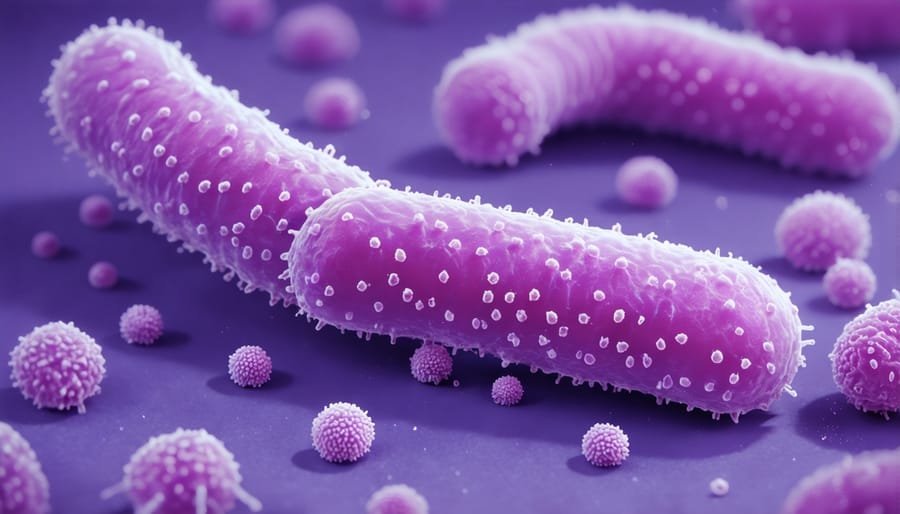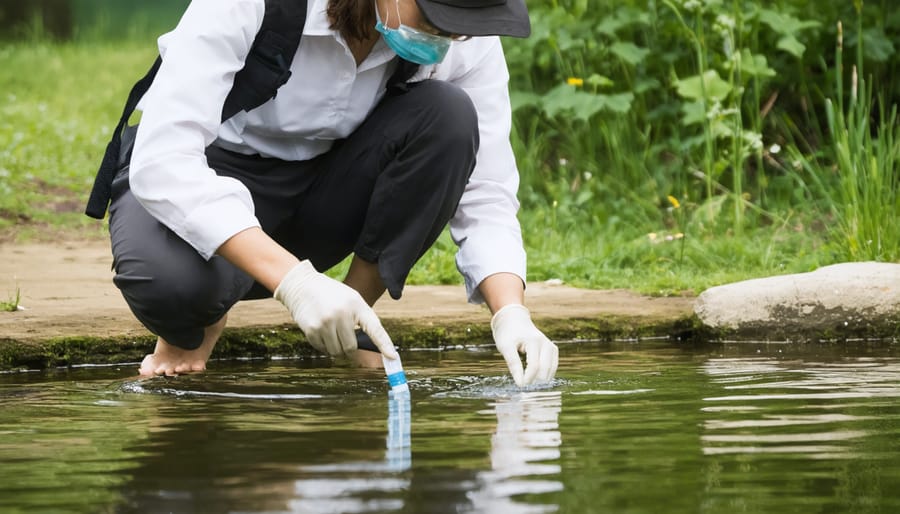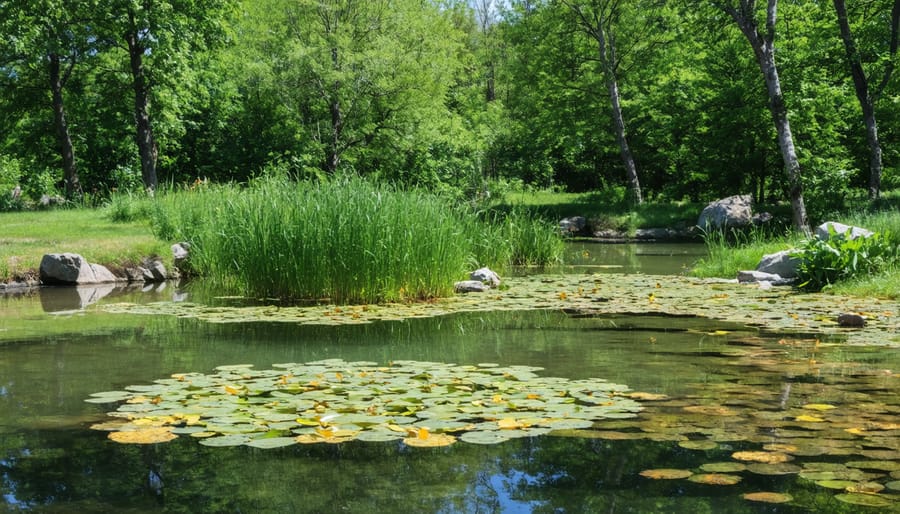
Is Your Pond Water Safe? What E. Coli Tells You About Your Water Garden
The silent presence of E. coli in pond water poses serious risks to both aquatic life and human health, yet many pond owners overlook this microscopic threat. Testing reveals that up to 40% of backyard ponds contain unsafe levels of these bacteria, which can cause everything from mild stomach upset to severe infections. Unlike visible pond problems such as algae or murky water, E. coli contamination requires specific testing and management strategies to identify and control. Whether you’re maintaining a decorative water feature, a swimming pond, or a wildlife habitat, understanding E. coli’s impact on your pond’s ecosystem is crucial for keeping your water safe and healthy. This introduction to pond water safety will help you identify potential contamination sources, implement effective testing protocols, and maintain proper water quality to protect both your pond’s inhabitants and anyone who comes into contact with the water.
Understanding E. Coli in Pond Environments

Common Sources of E. Coli in Ponds
E. coli typically finds its way into pond water through several common sources, and understanding these can help you better protect your pond’s ecosystem. Wildlife is one of the primary contributors – ducks, geese, and other water birds can introduce E. coli through their droppings. While these lovely visitors add charm to your pond, they can significantly impact water quality.
Runoff from surrounding areas, especially after heavy rain, can carry E. coli from various sources. This includes nearby agricultural areas where animal waste might be present, or urban areas where pet waste hasn’t been properly disposed of. Even your backyard can be a source if you have pets that spend time near the pond.
Failing septic systems or leaky sewer lines in the vicinity can also contribute to E. coli contamination. This is particularly concerning for ponds located in residential areas or near older infrastructure. Livestock and farm animals grazing near your pond can introduce bacteria through their waste, which can be particularly problematic during wet weather.
Natural debris like decomposing leaves and organic matter, while not direct sources of E. coli, can create conditions that allow bacteria to thrive. Regular pond maintenance and proper filtration can help manage these potential sources and maintain healthier water conditions.
Testing Your Pond Water for E. Coli
DIY Testing Options
For pond owners who want to monitor E. coli levels at home, several water quality testing options are available. The most popular choice is using bacteria test strips, which are affordable and easy to use. These strips change color when dipped in pond water, indicating the presence of harmful bacteria, including E. coli.
Another reliable option is the liquid testing kit, which typically provides more detailed results than strips. While these kits require a few more steps, they often come with clear instructions and can detect various bacterial levels more precisely.
For a budget-friendly alternative, you can use a basic UV light tester. While not as accurate as chemical tests, these handy devices can help spot potential bacterial issues by illuminating organic matter in water samples.
Remember to follow the instructions carefully and maintain consistent testing schedules – ideally monthly during warm seasons and quarterly during cooler months. Keep a simple log of your results to track changes over time and spot potential problems early.

Safe vs. Unsafe E. Coli Levels
E. coli levels in pond water serve as important indicators of water quality and safety. While some E. coli presence is natural, excessive amounts can signal potential health risks. For recreational ponds, the EPA recommends keeping E. coli levels below 235 colony-forming units (CFU) per 100 milliliters of water for single samples, or below 126 CFU/100mL for a geometric mean of multiple samples.
When E. coli levels exceed these limits, the water becomes unsafe for activities like swimming or wading. High levels typically indicate contamination from animal waste, sewage, or other sources of fecal matter. This contamination increases the risk of illness for humans and pets who come into contact with the water.
To put these numbers in perspective, pristine pond water typically contains less than 100 CFU/100mL. Levels between 100-235 CFU/100mL suggest the need for monitoring and potential corrective action. Anything above 235 CFU/100mL requires immediate attention and temporary restriction of pond access.
Regular testing is essential to track E. coli levels, especially during warmer months when bacteria multiply more rapidly. If you’re maintaining a pond for swimming or pets, consider monthly testing during peak usage seasons. Remember that E. coli levels can fluctuate dramatically after heavy rains or when wildlife activity increases around your pond.
Preventing and Reducing E. Coli in Your Pond
Natural Control Methods
Nature offers excellent solutions for controlling E. coli in your pond through natural filtration methods. Plants like cattails, bulrushes, and water iris not only add beauty to your pond but also help filter harmful bacteria. These aquatic plants absorb excess nutrients that E. coli might feed on, while their root systems create beneficial microhabitats for good bacteria.
Speaking of good bacteria, introducing beneficial microorganisms can help maintain a healthy balance in your pond. These helpful bacteria compete with E. coli for resources, naturally reducing their numbers. Consider adding pond-specific bacterial supplements during spring and summer when E. coli levels tend to rise.
Proper pond design plays a crucial role too. Creating different depth zones helps support various beneficial plants and organisms. Adding a shallow plant shelf around the pond’s edge creates a natural filtration zone. Ensure good water circulation with a properly sized pump, and consider installing a UV clarifier to provide additional protection against harmful bacteria.
Remember to maintain a healthy fish population, as overcrowding can lead to excess waste and increased bacterial growth. By combining these natural approaches, you’ll create a balanced ecosystem that naturally keeps E. coli in check.

Maintaining a healthy pond environment requires vigilance and regular monitoring, especially when it comes to E. coli levels. By conducting routine water quality tests, keeping your filtration system in good working order, and addressing potential contamination sources promptly, you can create a safer environment for both wildlife and human enjoyment. Remember to test your pond water at least monthly during warm seasons and after heavy rainfall events. Consider keeping a simple log of your test results to track changes over time and spot potential issues early. While some bacteria are natural in pond ecosystems, maintaining proper balance through good maintenance practices will help ensure your pond remains a beautiful and safe feature of your outdoor space. Don’t hesitate to consult with local water quality experts if you notice persistent problems or unusual test results.
